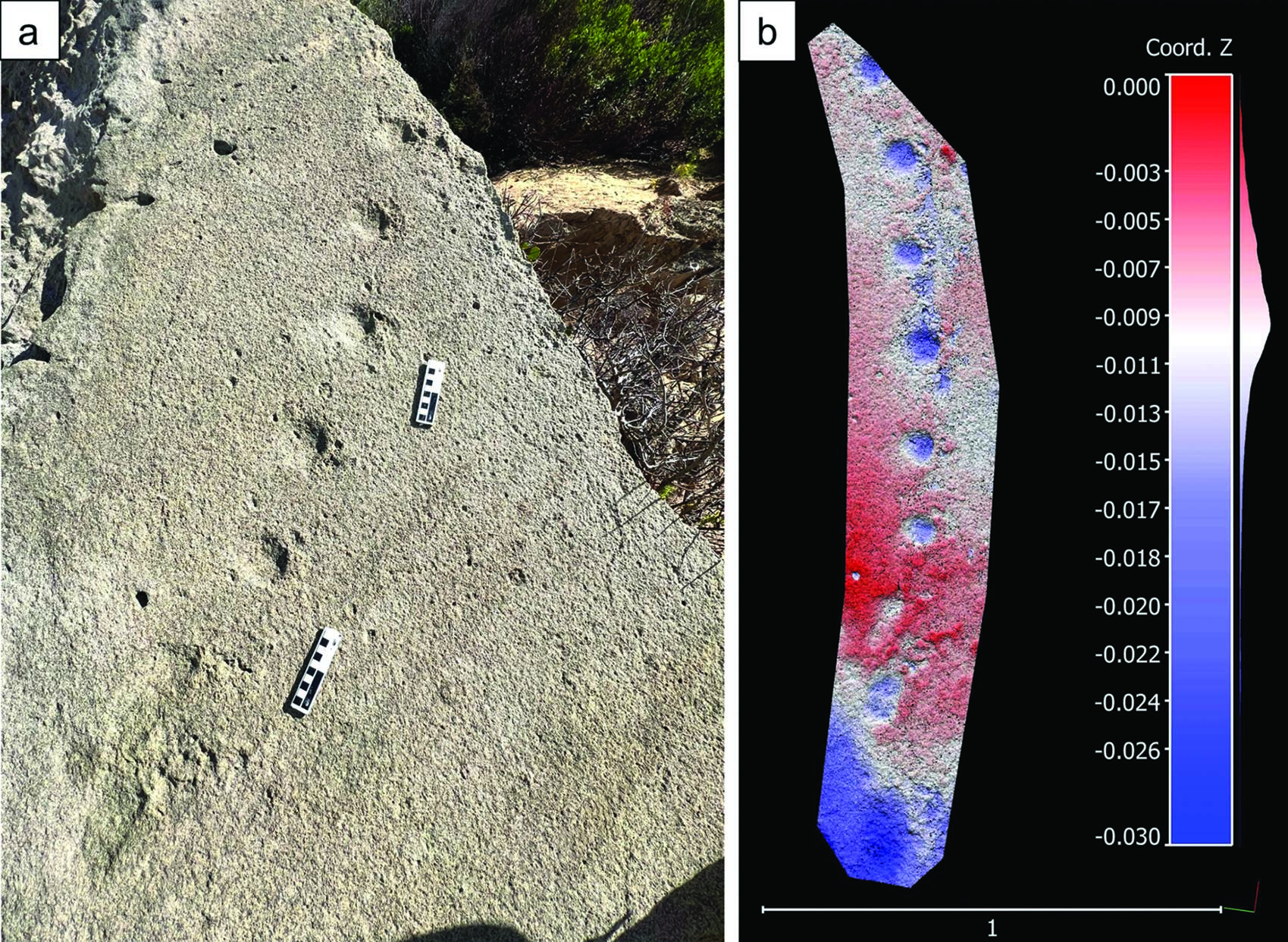Have you ever wondered what the footprints of an ancient pangolin might have looked like? Well, you might just be about to find out, as researchers have discovered what they believe is highly likely to be the world’s first known fossilized pangolin trackway.
The trackway was first found back in 2018 on a cemented dune located in the Bosbokfontein Private Nature Reserve, South Africa. However, it wasn’t until 2023 that the researchers became more confident in identifying what animal might have been responsible for making the tracks.
That confidence was sparked by the help of two Indigenous Master Trackers, #oma Daqm and /uce Nǂamce, who are experts in all things animal tracking.
“We showed them the intriguing trackway, which consisted of eight tracks and two scuff marks made, apparently, by the animal’s tail. They examined the track-bearing surface at length, conversed with one another for some time, and then made their pronouncement: the trackway had been registered by a pangolin,” explained the authors of the study on the trackway in an article for The Conversation.
“This was an astonishing claim, as no fossilised pangolin tracks had previously been recorded anywhere in the world.”
To add further weight to the claim, the researchers used a method called photogrammetry to turn the two-dimensional photos of the tracks into three-dimensional digital models. This technology came in pretty handy for carrying out further analysis – the chunk of rock containing the trackway was too big to be moved.
A photograph of the trackway vs. a 3D model.
After extensively examining these models, the photographs, and the track site, and consulting with other experts in tracking and trace fossils, it was concluded that it was highly likely that the trackway did indeed belong to a pangolin.
Using a dating technique called optically stimulated luminescence, the team was also able to determine that the tracks were made sometime between 90,000 to 140,000 years ago, during the Pleistocene.
While the waddle of an ancient pangolin being responsible for the trackway is described as “probable” rather than definite, the researchers were still able to exclude other potential trackmakers, or at least concluded they were less likely to have left the tracks. For example, servals, genets, and jackals were all fielded as plausible possibilities, but deemed less likely than a pangolin.
Not only is this trackway potentially a world-first find, but the authors also hope the discovery will bring attention to the current problems faced by pangolins. The tracks suggest that pangolins once roamed across a much wider range – now, they are rapidly disappearing, with all eight species experiencing decreasing populations and three listed by the IUCN as critically endangered.
Alongside habitat loss and fragmentation, this is largely due to demand for their scales and meat, leading to pangolins becoming the world’s most trafficked mammal.
The study is published in the South African Journal of Science.
Source Link: World’s First Known Fossilized Pangolin Tracks May Have Been Discovered In South Africa
